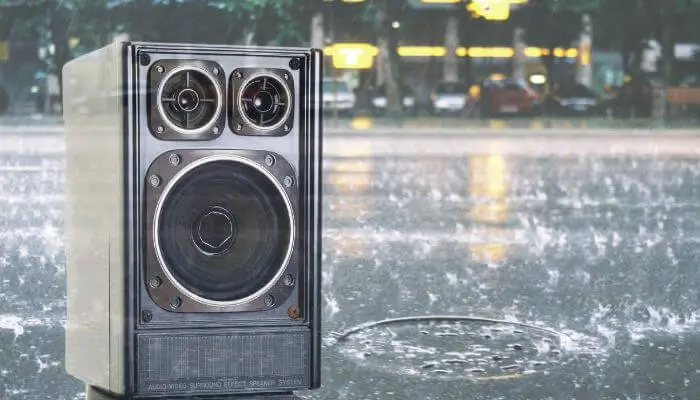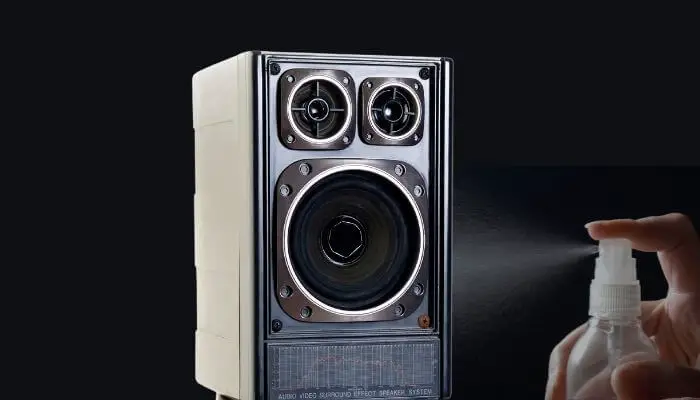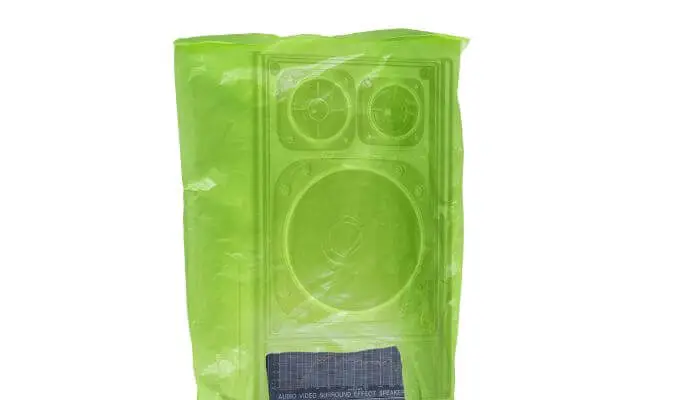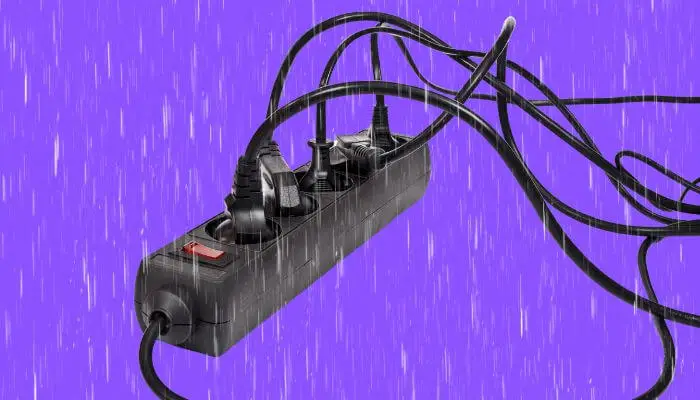It’s no question that music has a way of improving almost any social gathering. Who wouldn’t want to listen to their favorite songs at a picnic or while chilling by the pool?
That said, bringing your speakers outside can expose them to humidity, rain, or even pool water. So, knowing how to waterproof speakers is crucial before bringing them outdoors.

In this article, we’ll take you through several effective methods that you can use to protect your speakers from water damage.
1. Use a Protective Case
Using a protective case will help keep your speakers nice and dry. There are several kinds of cases, but they all serve the same purpose.
Protective cases can be made of hard or soft material. Hard cases are more sturdy and durable, but they can be quite bulky, making it more difficult to carry your speakers around.
Soft cases, on the other hand, aren’t as durable, but they will be easier to carry because of the light material.
If you choose to go with a protective case, take note of your speakers’ measurements to find one that fits. If you’re bringing your speakers to a place where you know they might get wet, make sure to buy a waterproof case.
Note that using a case might mess with the sound quality of your speakers. So, if you really want to enjoy your music to the fullest, you can check out one of the other methods.
2. Coat Them With a Waterproof Sealant
Using a high-gloss polymer to coat your speakers is an effective way to protect them from water damage. This is usually a varnish or spray that is easy to apply.

Here’s a step-by-step guide on how to use this method:
- Before applying the sealant, check that you bought one that’s designed specifically for speakers. If not, ask an expert first if it might affect the speakers’ performance in any way.
- Make sure you work in a well-ventilated area. If you’re working inside your house or the garage, lay down some newspaper so the coating won’t get on other surfaces.
- Clean the surface of your speakers so that you won’t seal any dirt or dust on them.
- Take off the grill that’s covering the speaker cone. If you’re not sure how to do this, you may refer to your speaker’s manual.
- Now it’s time to apply the sealant to the cone. Shake the sealant in its container first to make sure it’s mixed well. Cover the entire speaker in a thin and even coating with the spray, or use a foam brush if you have a varnish.
- Leave the speaker in a well-ventilated area to dry overnight.
- If the speaker is completely dry, you may reattach the grill. Feel free to test if your speaker is working as it should.
Does Waterproof Spray Work on Speakers?
Waterproof sprays will also work on your speakers, but remember that the coating method won’t be permanent.
When the coating wears off, which will happen quickly, you’ll need to reapply it.
3. Wrap Them in a Plastic Bag
If you’re in a pinch and you don’t have time to buy a case or use a sealant, you can always cover your speakers with a plastic bag.

Trash bags are especially useful since they come in various sizes that can fit your speakers.
It may change the sound slightly, but it won’t be too noticeable. Plus, it’s handy to have around if it suddenly starts to rain.
If your speakers are meant to be left outdoors, you can also use plastic bags to protect them from cold weather.
How to Protect Speaker Wires and Sockets From Water
If your speakers need to be plugged in, don’t forget to waterproof the wires and sockets as well. Because they’ll also be exposed to the elements, you’ll need to keep them dry to avoid causing short circuits and even fires.

Here are some methods you can use to protect your speaker’s wires and sockets:
1. Use a Weatherproof Socket Box
Weatherproof socket boxes are specially designed for outdoor plugs. They have a rubber seal that stops water from leaking inside.
Some boxes are designed to only cover the socket when nothing is plugged in. So, if you want to be able to use your speakers, you’ll need to make sure to get one that has holes for the wires to pass through.
2. Cover Them With a Plastic Bag
A cheaper option would be to use a plastic bag to cover your sockets. Be sure to use one that has no holes or tears.
Wrap the entire socket with the plastic bag and seal it in place with some duct tape. Remember to check for condensation once in a while, as you will need to replace the plastic bag.
3. Use a Tupperware Box With Wire Holes Cut in It
Another handy solution is to cover your plugs with a Tupperware box. Check to see if all plugs and extension cords will fit inside beforehand, though.
Next, carefully drill a hole at one end of the box and more holes for each socket you’ll be using if you plan to put an extension cord inside.
The wires will be going through these holes so the box can stay closed, protecting the sockets from the elements.
Using a small knife, cut a slit from the opening of the box to the hole. This is so you can slide the wires into place. Repeat the process for all the holes you’ve drilled.
Once you’ve got all the wires and sockets in place, close the lid and seal it. You may use duct tape for this as well. Check the box occasionally to see if there is any moisture inside.
Final Words
Whether you’re using a case, sealant, or just a simple plastic bag to waterproof your speakers, make sure to double-check that you’ve waterproofed them properly before heading outside so that you don’t run the risk of damaging them.
Now that you’ve learned how to waterproof your speakers, wires, and sockets, you’ll be able to enjoy your tunes at any outdoor gathering!

